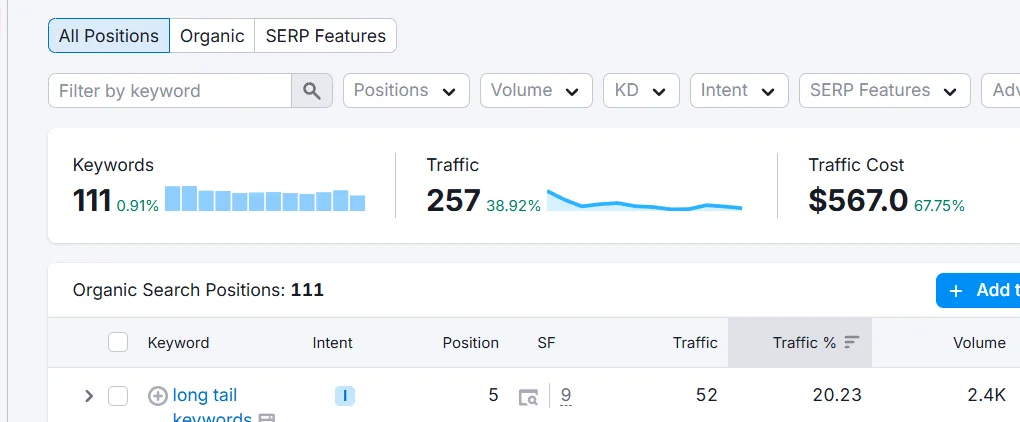Advantages of Using Long-Tail Keywords in Your SEO Strategy
Table of Contents
When it comes to optimizing your website for search engines, one tactic stands out for its effectiveness: long-tail keywords. Such keywords may not attract as many visitors as the lean-consult header keyword as they are long-tail and contain more words, but they also have advantages.
In this blog, we’ll explore the common benefit to long tail keywords and why they’re essential for driving quality traffic to your website.
What Are Long-Tail Keywords?
Before diving into their advantages, let’s first answer: what are long tail keywords? Long-tail keywords are keyword phrases that are usually made up of more than two words, often three or more. They are tighter, purpose-focused, and sometimes less saturated than broader, broad-match keywords. For example:
Generic keyword: “Shoes”
Long-tail keyword: Finally, the two best search queries to focus on are “comfortable running shoes for women” and “cheap running shoes for women”.
The use of these keywords can bring you in contact with a more relevant population who is likely seeking something in particular.
Benefits of Long-Tail Keywords
Long-tail keywords have various benefits that can greatly improve your content strategy and marketing efforts. By focusing on these key phrases, you may better understand user intent and increase your chances of converting visitors into customers. Here’s why long-tail keywords are a powerful asset:
1. Enhanced relevance
By using long-tail keywords, you can easily address a very narrow niche of visitors. By including the specific phrase in a search query, the user is often more advanced through the buyer funnel and thus more likely to convert.
2. Improved conversion rates
Another reason for using long-tail keywords is that they are usually connected with higher conversion rates. It has been pointed out earlier that the users using particular key phrases in the search will be closer to the decision.
By customizing your content to these queries, you stand a better chance of turning these users into customers.
3. Less competition
Long-tail keywords are often less competitive than broader terms. This reduced competition enhances your chances of ranking higher in search engine results, allowing your content to reach the intended audience more efficiently.
4. Cost-effective advertising with long-tail keywords
In case you are conducting paid advertisements, you will realize that the cost of long tail keywords is more affordable than those of broad keywords.
This makes them a strategic investment for any company that is keen on attaining the greatest rate of return on its investment.
5. Enhanced content strategy
In general, with longtail keyword research you can see the gaps in your content and create very specific articles or pages.
It also helps you get a better ranking in search engine results but at the same time also helps you position yourself as a specialist in your particular field.
6. Semantic search alignment
Semantic search has therefore gained significant importance with advances in search engine technologies. Semantically, long-tail keywords fit strategically because users type what they say semantically.
How to Conduct Effective Longtail Keyword Research
Finding the right long-tail keywords requires a strategic approach. Here are some tips:
Use Keyword Tools:
Platforms like Google Keyword Planner, Ahrefs, and SEMrush are great for identifying long-tail phrases.
Analyze Competitor Content:
Check what keywords your competitors rank for and identify opportunities.
Focus on User Intent:
Think about the questions or problems your audience might have and create content that addresses them.
Use FAQs:
Use commonly asked questions in your niche as inspiration for long-tail keywords.
Practical Applications of Longtail Words in SEO
Here’s how you can incorporate longtail words into your strategy:
- Blog Posts: Create detailed guides or answers to specific queries.
- Product Pages: Optimize descriptions with long-tail phrases that reflect user intent.
- FAQs: Include targeted long-tail keywords in frequently asked questions sections.
How Long-Tail Keywords Incorporate Short-Tail Keywords
Short-tail keywords are typically part of long-tail keywords. For instance, the short-tail keyword ‘SEO tips’ falls within the long-tail keyword ‘best SEO tips for beginners in 2025.
Long-tail keyword descriptive additions mirror user intent more than head terms, so businesses targeting niche audiences will find them valuable.
Long-tail keywords are key phrases that reflect the precise needs of users, aligning your content more closely with their search intent and making conversions more likely.
Why You Should Prioritize Long-Tail Keywords
The long tail keywords benefits go beyond just ranking higher. They help you:
- Build trust with your audience by providing tailored solutions.
- Increase your chances of appearing in voice search results.
- Drive steady, quality traffic to your site over time.

Conclusion
The common benefit to long tail keywords lies in their ability to connect you with a highly targeted audience, improve rankings, and drive meaningful engagement.
Using such keywords is not only good for SEO but also brings the audience that appreciates your content and engages with it.
There is no better time than today to get started with long tail keyword research to cause a shift in your SEO success.
AI-SEO FUSION
Email: info@aiseofusion.com
Call: +92-3335232846
©2025 AI SEO Fusion. All Rights Reserved.
